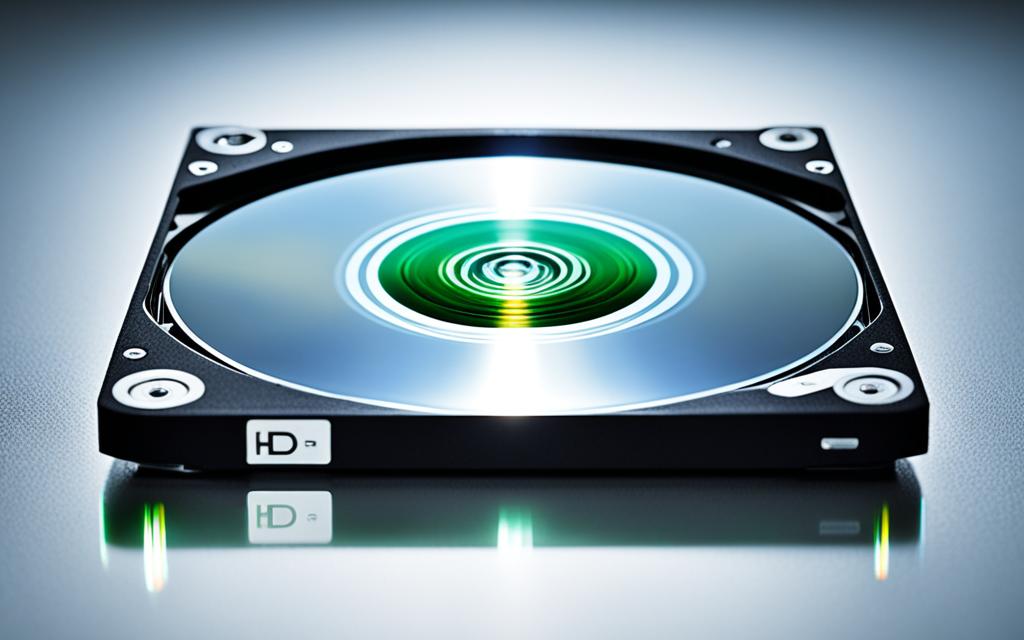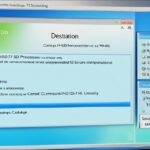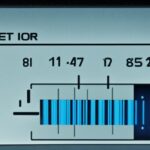Table of Contents
In today’s world, it’s essential to prevent zero data loss. We’re diving into hard drive mirroring, which creates data copies on a hard drive. This keeps your files safe from issues like hardware failures, viruses, or user mistakes1. Knowing how to mirror your HDD is key to protecting your digital life and keeping things running smoothly1. Using tools found in Windows 10 and software like EaseUS Disk Copy is smart. They help you copy your info safely. With the correct knowledge and tools, you can back up your HDD well. This boosts data protection and makes it easier to recover from problems.
Key Takeaways
- HDD mirroring creates automatic, secure copies of your data.
- Utilising tools like EaseUS Todo Backup can help prevent significant data loss.
- Ensure hard drives meet compatibility specifications for effective mirroring.
- Windows tools allow beginners to mirror hard drives with relative ease.
- Maintaining similar hard drive sizes is crucial for the mirroring process.
- Using dedicated disk cloning software simplifies the mirroring process.
- Regularly monitoring drive health is essential for optimal data protection.
Understanding Hard Drive Mirroring
Hard drive mirroring is key for anyone looking to keep their digital data safe. This strategy, often linked to RAID setups like RAID 1, lets users make an exact copy of their hard drive data on another drive. This cloning action does not just allow for up-to-date info access but also reduces the risk of system failures.
Definition of Hard Drive Mirroring
Basically, hard drive mirroring is about copying data from one drive to another, keeping an exact match of the original data. Using RAID tech, particularly RAID 1, this needs at least two drives, but more can be added depending on the RAID controller. It’s crucial that drives in a RAID 1 setup are nearly identical in capacity and type2 for the best results.
Benefits of Hard Drive Mirroring
Hard drive mirroring brings many benefits. It offers data redundancy, protecting against drive failures with a backup ready, which means less downtime. RAID 1 setups are highly reliable and keep read speeds up, making them perfect for uses like transaction databases and email servers2. Though it requires more storage space due to duplication, it significantly increases data security2.
Windows has built-in tools that let users replicate their data across drives, adding a layer of security against hardware failures3. Additionally, mirroring software makes it easier to create mirrored volumes, ensuring they don’t surpass the smaller drive’s space. This dual-drive setup not only keeps data safe but aids in quick recovery, making it a wise choice for keeping data secure3.
While RAID 0 may be faster, it doesn’t protect data like RAID 1 does. For those who value keeping their data safe and recoverable, hard drive mirroring is an excellent option2.
Learn more about the advantages of hard drive mirroring2
Requirements In Windows 10 To Mirror a Hard Drive
To mirror a hard drive in Windows 10, knowing the needed specs and modes is crucial. This includes checking if your hard drive matches with the boot mode, be it MBR or GPT. Making sure they fit together makes a successful mirroring more likely.
Compatible Hard Drive Specifications
For mirroring to work well, the source and target drives must be compatible. They need to have the same size and storage format. If you’re moving from a smaller to a bigger drive, like from 500GB to 2TB, compatibility is key. Also, having the same boot mode, either MBR or GPT, on both drives helps avoid slowdowns when you’re running out of space4.
Checking Boot Mode Types
Before you start mirroring, you must find out your hard drive’s boot mode. Windows 10 can use both MBR and GPT boot modes. MBR suits drives up to 2TB, and GPT is for larger ones. Knowing your boot mode helps set up mirroring correctly. Remember, mirroring helps keep data consistent across drives, not as a backup5.
How to Mirror HDD: Step-by-Step Guide for Windows 10
To start HDD mirroring, get everything ready first. Make sure both the source and destination drives are prepared. Check configurations and that the formats and partitions are correct. Follow a Windows 10 guide to make the process smoother.
Preparation Steps
Here are the steps before mirroring:
- Make sure both drives connect well to your PC.
- The secondary drive needs to be formatted and unallocated.
- Change drive labels to avoid mix-ups.
- Check that the drives are ready for mirnng.
Accessing Disk Management
To start mirroring in Windows 10, go to Disk Management:
- Right-click the Start menu and pick Disk Management.
- Find the drives for the mirroring.
- Right-click the source drive and choose Mirror Volume.
- Then, select the destination drive.
This might take a while. The time depends on how big the files are and the drives’ speeds. Keep an eye on the mirroring to ensure it runs well. Think about using software for incremental backups. This lets you go back to earlier versions if needed. For more features, software like AOMEI Backupper could help manage your data and keep it safe678.
Using Disk Cloning Software for HDD Mirroring
Using disk cloning software is key for efficient HDD mirroring. Choosing the right tool means looking at what you need it to do. EaseUS Disk Copy stands out because it lets you clone drives with bad sectors and make bootable disks. This software makes the cloning process easy for beginners while offering advanced options for those with more experience. It’s great for many users due to its flexibility and ease of use.
Choosing the Right Cloning Software
Though EaseARGOS RADAR” Disk Copy is a solid choice, lots of other tools are out there. For example, Macrium Reflect is known for its quick, reliable cloning for IT pros and repair shops9. There’s also IDrive and Acronis, offering business-level backup and cloning10. Knowing what different cloning tools offer can help you make the best choice. It ensures your mirroring goes smoothly and keeps your data safe.
Step-by-Step Cloning Process with EaseUS Disk Copy
To start cloning with EaseUS Disk Copy, first download and install it. Pick the source disk you want to clone. Then, choose where you want the cloned data to go. You can adjust the size of the partitions if you need to. Once you’re all set, start the cloning and keep an eye on the progress.
After it’s done, check that the new disk works well before you think about formatting the original disk11.Discover more about top disk cloning software.
FAQ
What is hard drive mirroring?
Hard drive mirroring means making an exact duplicate of one hard drive onto another. It’s known as cloning. This method is a reliable way to backup data, keeping your information safe from hardware problems, viruses, and mistakes.
How does HDD mirroring protect my data?
HDD mirroring doubles your data’s safety by keeping an updated copy available. If something goes wrong, like a system failure or corrupted files, you can easily get your data back. This lessens the chance of losing important information.
What specifications do my drives need for mirroring?
For successful mirroring in Windows 10, both your original and backup drives need to match in size, storage style, and boot method. They should be set up for either MBR or GPT boot modes.
Q: What preparation steps should I take before mirroring?
Make sure both drives are connected properly before you start. Check that your drive labels are right, and your backup drive is formatted and ready to go. This prepares you for a smooth mirroring process.
Which disk cloning software is recommended for HDD mirroring?
For HDD mirroring, EaseUS Disk Copy is top-notch. It’s easy to use, even if you’re not tech-savvy. The software can handle problematic sectors and makes bootable disks, which eases the cloning steps.
Source Links
- https://www.easeus.com/computer-instruction/mirror-a-hard-drive-in-windows-10.html – How to Mirror a Hard Drive in Windows 10 [step by step]
- https://www.techtarget.com/searchstorage/definition/disk-mirroring – What is disk mirroring (RAID 1)? | Definition from TechTarget
- https://www.magoshare.com/disk-copy-clone/mirror-hard-drive.html – Mirroring Hard Drive – Create A Copy of Your Disk Drive
- https://www.hp.com/us-en/shop/tech-takes/how-to-clone-hard-drive-windows-10 – How To Clone a Hard Drive in Windows 10 | HP® Tech Takes
- https://www.thewindowsclub.com/create-mirrored-volume-instant-hard-drive-backup-windows-10 – How to create Mirrored Volume for Instant Hard Drive Backup in Windows 11/10
- https://www.wikihow.com/Mirror-a-Hard-Drive – How to Mirror a Hard Drive in Windows: 10 Easy Steps
- https://www.diskpart.com/clone/mirror-c-drive-windows-10-1503.html – How to Mirror C Drive Windows 10?
- https://www.diskpart.com/articles/hard-drive-mirroring-software-1234.html – Hard Drive Mirroring Software Windows 10/7/8
- https://www.macrium.com/cloning-software – Macrium Reflect
- https://www.pcmag.com/how-to/how-to-clone-a-hard-drive-on-windows-pc-mac – How to Clone a Hard Drive on a PC or Mac
- https://www.seagate.com/support/kb/cloning-a-desktop-hd-how-to-perform-a-clone-in-windows-with-discwizard-007716en/ – Cloning a Desktop HD: How to Perform a Clone in Windows with DiscWizard | Support Seagate US








